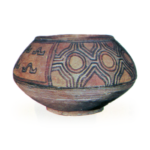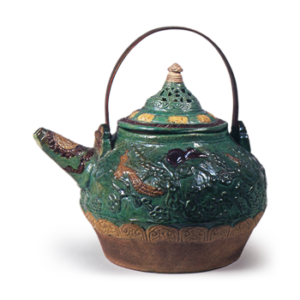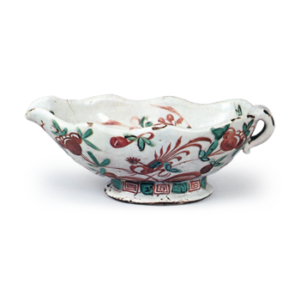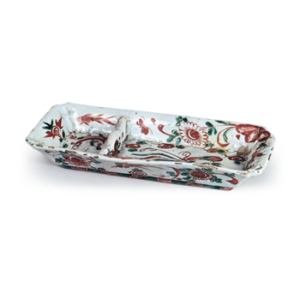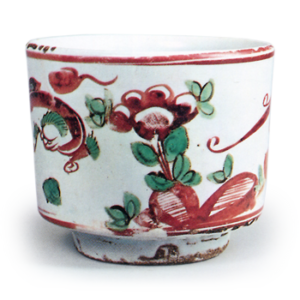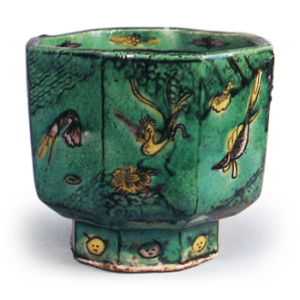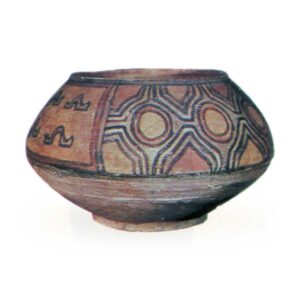
The Indus Valley, which stretches from West Pakistan to the northwest of India, was the site of an ancient civilization that existed from 3,000 to 1,700 BC. Among them, the ruins of the cities of Mohenjo-daro (Sindh) and Harappa (Punjab) are particularly famous. The houses in these cities were built with standardized bricks, and many ceramic products such as ceramic pipes were used for drainage systems. Earthenware such as pointed-bottomed jars, plates, and sake cups are also found among the daily necessities, and earthenware with colored patterns was also produced. The potter’s wheel was used for molding, and fine patterns were applied in black on a red ground. The surface of many of these vessels is divided by bands, within which peacocks, goats, and other plants are arranged, or geometric patterns are drawn. Other famous examples are small terra cotta figures, including human figures and models of cars. The figures are depicted in a way that emphasizes the characteristics of both men and women, and together with the models, they served as ceremonial objects. Many small terra cotta figures of this type were excavated from ruins of later historical periods.
(Piggot, S., PrehistoricIndia.)

